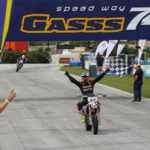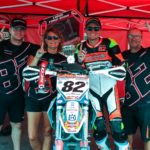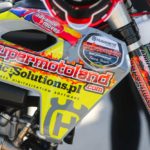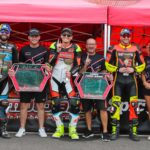As any parent that has an aspiring motogp star as a child will know, the cost of going racing is extremely high and as your child becomes ever more competitive then the costs increase even further as you continually need to be on the most competitive machinery available and with a good team to get the best out of the package. It’s no surprise that many of today’s WSBK and MotoGP stars have parents that have had to remortgage their houses to be able to finance the immense spend that is required to give their child the best shot at a career in Motorcycle racing. The rewards can be great for those that succeed but what about the many more that don´t make it?
Now, motorcycle racing is a great sport and for most parents the first years of racing with a child are filled with fun and progress in the youth racing divisions of whatever discipline they choose to race in. It’s only when the child shows some speed and a desire to become like Marc Marquez or Valentino Rossi that the parent has to get on the phone to the bank manager!
To get noticed these days you need to be road racing in some of the pre-moto3 and European talent cup classes in Spain that then feed into the moto3 junior world championships, and from there up onto the world stage of moto3, moto2 and the ultimate goal of motogp. European talent cup rides alone can cost from 30,000 to 90,000 Euros a year depending on the team and machinery. You maybe competing there for a while as your child develops his racing skills and experience until he is ready to progress onto the next level. If money is no object then this is the best path to take, unless you are lucky enough to be selected into a national talent cup series that recognises your child’s talent and helps finance you through the expensive onward steps to stardom. But there is an alternative……enter Iker lecuona.
Now Iker took an alternative path to others and neatly side stepped the whole moto3 and smaller capacity road racing classes to insert himself straight into a world championship moto2 ride with one of the championships top teams. How did he do this you ask? Spanish championship supermoto racing, that’s how.
Iker trained and practiced on supermoto bikes like many of the world’s top motorcycle racers as it’s the perfect bike to train hard on with a lessened risk of injury or crash damage, as speeds are lower and the bikes are a lot tougher than road racing bikes. There are many youth classes in Spanish supermoto that have kids as young as 8 years old battling it out on 65cc and then 85cc supermoto bikes. The competition is fierce but the atmosphere is fun, maybe because no one has had to mortgage their house to get there. The racing is about as cheap as it gets with bikes costing about 4000 euros and when your kid crashes one, he just picks it up and rides off again, no expensive fairings and clip ons to replace, these bikes are made to crash, they are after all dirt bikes with slick tyres on.
The benefits of supermoto racing aren’t just in the cheaper cost though. Kids learn to push to the absolute limit as the consequences of a crash are light. So they can find their limits without Dad giving them a telling off for wrecking the bike. Kids like that, they just go faster and faster. Look now at the kids tearing around the supermoto tracks of Spain and you will see the next generation of motogp stars as they hone their skills and grow in confidence. It’s safer as well, the speeds are lower than road racing and the risk of injury is lessened which is good for any nervous parent.
Iker developed his skills on the supermoto bike, which culminated in him winning the Spanish SMroad championship when he was only 15 years old. This got him noticed. He had learnt every skill set that he needed to turn himself into a moto2 rider. When he won the SM road championship he was backing his CRF450 bike into corners and power sliding the bike back out, he had learnt to push the front tyre to the limit on corner entry and save the front even when it cried no more and slid away. He was used to pushing to the limit and beyond whilst battling against other top riders all hungry for the win. All of these skills were very relevant to moto2 racing and he secured himself a ride in the Spanish moto2 championship with a top team for the following year. That same team saw his potential and took him into the moto2 world championships where he has been ever since, making steady progress in one of the toughest racing classes on the planet. This year he has started to breakthrough to the front of the pack and we hope that he continues to improve and show the world how fast a rider he is.
As team manager for the Supermotoland race team in the Spanish supermoto championship as well as an instructor at the supermotoland race school I can see the hotbed of talent that currently lies in the Spanish Supermoto series. In my opinion Iker is the tip of an iceberg of talent that is emerging from this series, and I hope to see many more of the current crop of racers follow in Ikers footsteps. I am not the only one to see this with more and more international racers starting to compete in the series and the red bull rookies seeming to be using it as one of their recruiting grounds.
If you are interested in joining the Spanish supermoto championship then information and regulations can be found at the RFME Spanish federation site or contact myself at supermotoland for information in English and team rides with the supermotoland race team.
Written by
Mat Ford-Dunn
Supermotoland instructor and race team manager.






